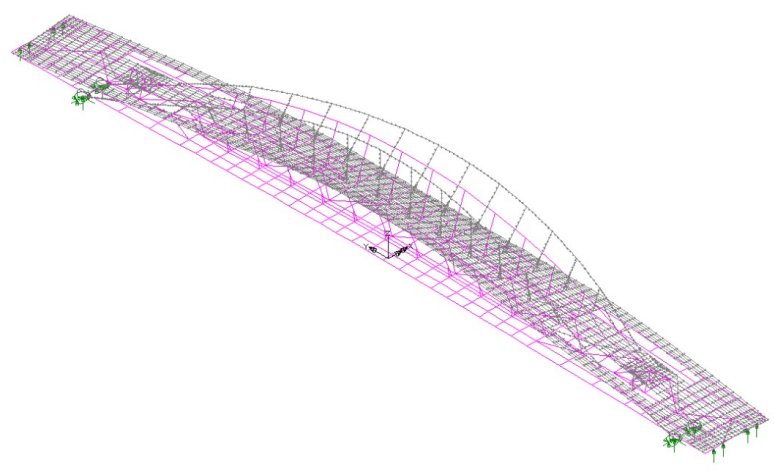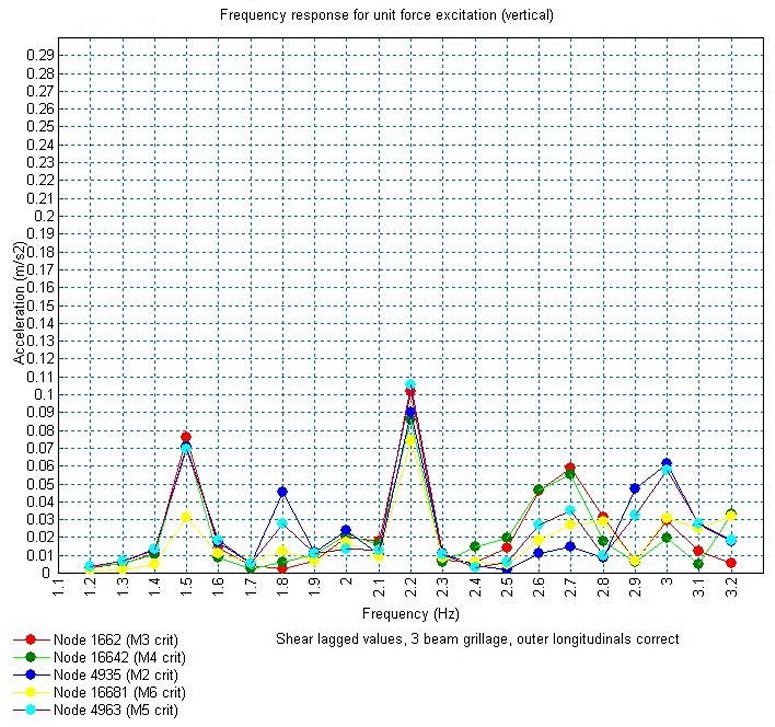
Case Study
Ponte della Musica
- Steel arch pedestrian bridge
- Natural frequency and forced
vibration analysis
- Nonlinear bucking analysis of
arches and section design

In 2000 an international design
competition was organised by the Comune di Roma (the Municipality of
Rome) for a new pedestrian bridge to cross the River Tiber, the
first dedicated large scale pedestrian bridge to be built over the
river since Roman times. The proposal by Buro Happold and
Powell-William Architects was awarded first prize and the bridge was
subsequently developed to tender design status by Buro
Happold with the aid of LUSAS Bridge analysis software.
Overview
The winning design comprises two
leaning steel arches supporting a steel deck. The total length of
the bridge is approximately 200m, with a clear span of 130m between
arch springing points. The springing points, in concrete,
incorporate staircases providing access from the river bank up to
deck level. The deck itself is designed for pedestrian usage but
with provision for future incorporation of a tramway. The bridge is
seen to be a key part of the Rome city plan and will connect the
various cultural and sporting facilities of the Flaminio district
with the Olympic stadium and other sports facilities on the west
bank in Monte Mario. Following the design competition the client
appointed the winning team, assisted by local firm, C. Lotti e
Associati, to develop the design to tender status. Final detailed
design was undertaken by the contractor, Constra.

Analysis
Davood Liaghat, Bridge Team Leader at Buro Happold said: ‘In
addition to using LUSAS for
dynamic analysis
of the structure; for both natural frequency and forced vibration,
we also
used it to perform nonlinear bucking analysis of the two large
arches as well as for the design of sections using output derived
under static load combinations, for both trams and buses, and also
for large crowd loading.'



Ponte Della Musica
during construction.
‘In addition to
using LUSAS for dynamic analysis
of the structure; for both natural frequency and forced vibration,
we also
used it to perform nonlinear bucking analysis of the two large
arches as well as for the design of sections using output derived
under static load combinations, for both trams and buses, and also
for large crowd loading.'
Davood Liaghat, Bridge Team Leader at Buro Happold
 Shortlisted
for the Institution of Structural Engineers Structural
Awards 2012: Award for Highway or Railway Bridge Structures for
excellence in the structural design of bridges carrying highways
and/or railways. Shortlisted
for the Institution of Structural Engineers Structural
Awards 2012: Award for Highway or Railway Bridge Structures for
excellence in the structural design of bridges carrying highways
and/or railways.
Find out more
Other LUSAS Bridge case studies:
|